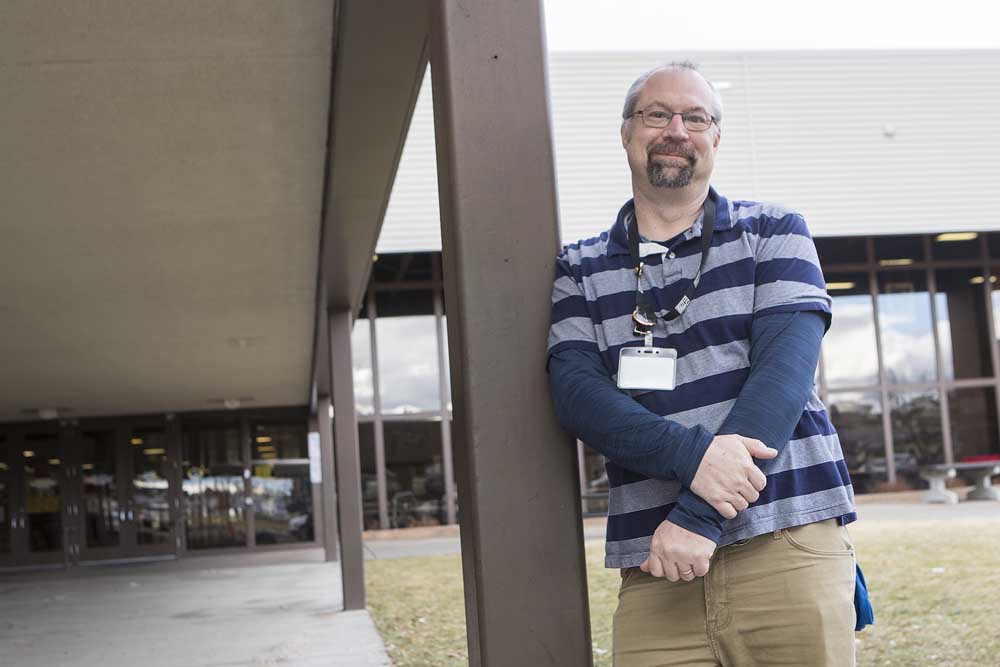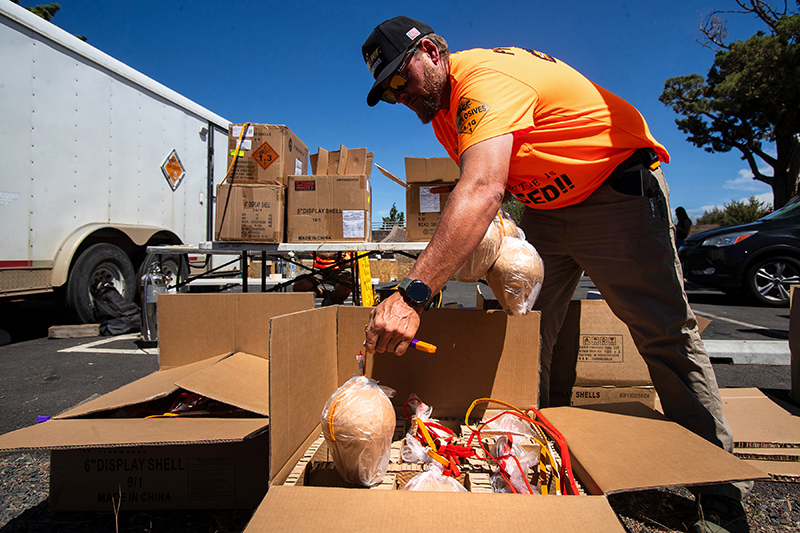Omicron wave sends educators scrambling as short-staffed schools worry of closure
Published 5:00 am Sunday, January 16, 2022

- “Everybody’s covering for everybody,” said Chris Boegelsack, standing outside Obsidian Middle School in Redmond after substituting for a special education class at the school on Thursday.
Chris Boegelsack had just arrived at the Redmond School District office, where he works in special education services, when his phone rang. The superintendent was on the line with an emergency request for Boegelsack, one triggered by the surging omicron variant of the coronavirus.
Multiple special education staffers at Obsidian Middle School were out sick. We need all-hands-on-deck, the superintendent told him.
Boegelsack had been a special education teacher at Obsidian for about a decade, but left his classroom three years ago to work in the district office. Still, as he hopped in his truck and headed to the school on SW Obsidian Avenue Thursday morning, he felt apprehensive.
It was the second consecutive day where special education classes nearly shut down in the district because of a lack of substitute teachers, but the problem was being felt at schools throughout Central Oregon.
With hundreds of educators and staff falling ill in Central Oregon’s two largest school districts, and too few substitutes on hand, principals, school board members and district officials have been forced to pitch in to help keep students in classrooms.
On Tuesday, 40 staffers from the Bend-La Pines Schools central district office were sent to assist schools, including assistant superintendent Lora Nordquist, who taught a second grade class.
On Friday, five Bend-La Pine School Board members were helping schools around the district, covering duties from lunch services to recess.
“Everybody’s covering for everybody,” Boegelsack said.
The potential consequences are troubling. The superintendents for Bend-La Pine Schools and Redmond School District each warned board members last week that the latest surge could bring a return to remote learning if too many staffers call out sick. While entire school districts elsewhere in Oregon are shutting down due to the COVID-19 spike, both superintendents said the closures would be temporary and only affect individual schools.
“Folks, if anybody’s listening and you want to sub, please, for goodness’ sakes, let us know,” Bend-La Pine Schools Superintendent Steven Cook said, leaning into the microphone at a board meeting Tuesday. “We will find a way to get you into the school.”
As of Friday, 127 students and 43 staff in Redmond School District had contracted COVID-19, according to the district’s COVID-19 online dashboard. On Tuesday, more than 500 students and 100 staff in Bend-La Pine schools were isolating after contracting the coronavirus.
The Bend-La Pine and Redmond districts requested help from hundreds of licensed and non-licensed substitutes last week, according to four days of data from High Desert Education Service District. Non-licensed, or classified, substitutes include educational assistants, food service workers and staff working in special education.
More than 90% of Bend-La Pine’s licensed teachers needing substitutes had their positions filled last week. For Redmond, that total was roughly 60%.
But for non-licensed substitutes, the trend is much starker. Less than half of those roles were filled in Bend-La Pine, according to the data. For Redmond, less than a third were filled. Many of those non-licensed positions needing substitutes have been special education teachers, according to Jayel Hayden, the human resource director for High Desert ESD.
The pandemic has caused a shortage of substitute teachers and school staff in Central Oregon for months, which mimics national trends. Last week, that shortage, compounded with the omicron variant, triggered a mad dash in some schools to cover absences and keep schools and classes afloat, multiple educators said.
Karen Jordan, the executive director of student services for the Redmond School District, taught an Obsidian Middle School science class. She described the experience as out of her comfort zone.
“There’s a lot of rotation happening,” she said. “So when there’s one cog in the wheel that’s out, it makes things a little more difficult to run smoothly.”
A return to remote learning would be especially challenging for students with disabilities, as well as their families, who need a safe place to bring their children while they go to work, Jordan said. Students with disabilities learn best with consistent and continuous classes, she added.
By summer 2020, nationwide surveys showed that more than 80,000 secondary and upper elementary students with disabilities reported facing more mental health challenges and having a “less positive” experience with school than other students, a trend that persisted through the 2020-21 school year, according to a June 2021 report from the United States Department of Education Office for Civil Rights. The report showed high numbers of students with disabilities receiving failing grades during distance learning in California, Virginia and Maryland.
“Some of our students just need paper and pencil. They need hands-on tasks. They need more concrete examples,” Jordan said.
“They’re not able to access a computer in the same way that a typically developing student would.”
On Thursday, Boegelsack spent the day teaching writing, math, reading and weight lifting for groups of special education students. Being back in the classroom felt like “an old hat,” he said.
During a break, he headed to the copy room and overheard teachers discussing the strain of covering for sick teachers, losing prep and free time. They were exhausted, he said. So was he.
“I’m definitely going to have to make up this time,” he said.
But there was no break coming. The following day, Boegelsack was called in to teach a chemistry class at Redmond High School.








